The first wild weed salad I foraged for last week's Culinary Challenge was not acceptable, due to one single ingredient. What was it? Come in to my post to find out!
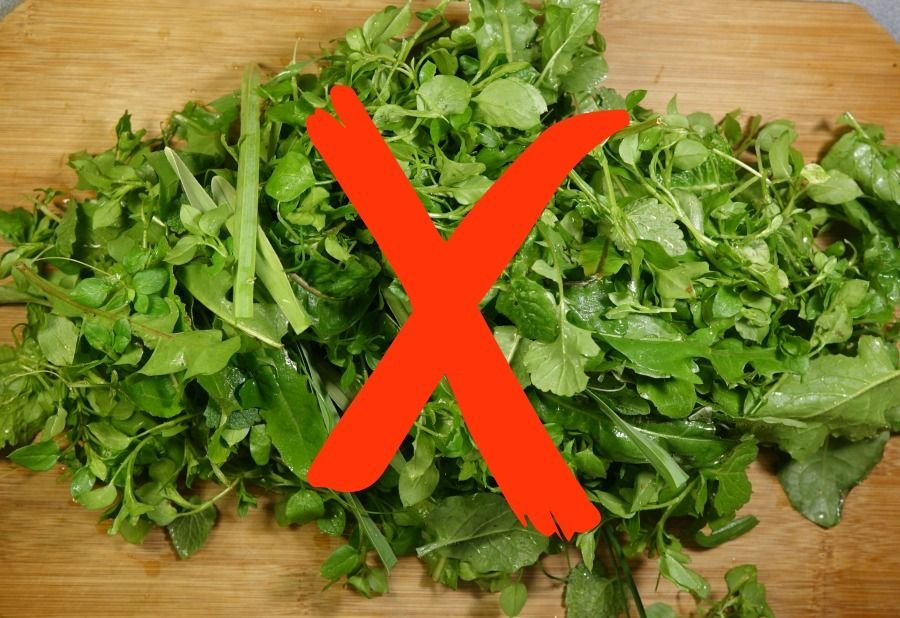
This post is defintely not a complaint. This post is to highlight what I learned about eating Paleo. I got two great weed salads out of my efforts. My second salad got 5th place and I'm really happy about that. The other entries were all great and every one is a winner in my view.
I appreciate that the guest judge, @kiwideb, made a separate post to review each entry. And @englishtchrivy was dedicated in reviewing each entry to make sure it fit the challenge's requirements.
A Starting Point - Weeds Are Good Paleo Food
I eat a lot of weeds, as some of you know well. I can forage a salad from my yard faster than eating out or going to the grocery store. I figured a wild weed salad must be Paleo, in the tradition of foragers throughout time. And, weed salads fit our contemporary lives well -- lots of fiber and nutrients, without a lot of calories. The Culinary Challenge Rules said that vegetables are paleo, so I was surely good to go with all my weeds!
Here are the weeds I put into my salad. You can test your identification skills by comparing the number of each plant with the numbered plant species list that is at the end of this post.
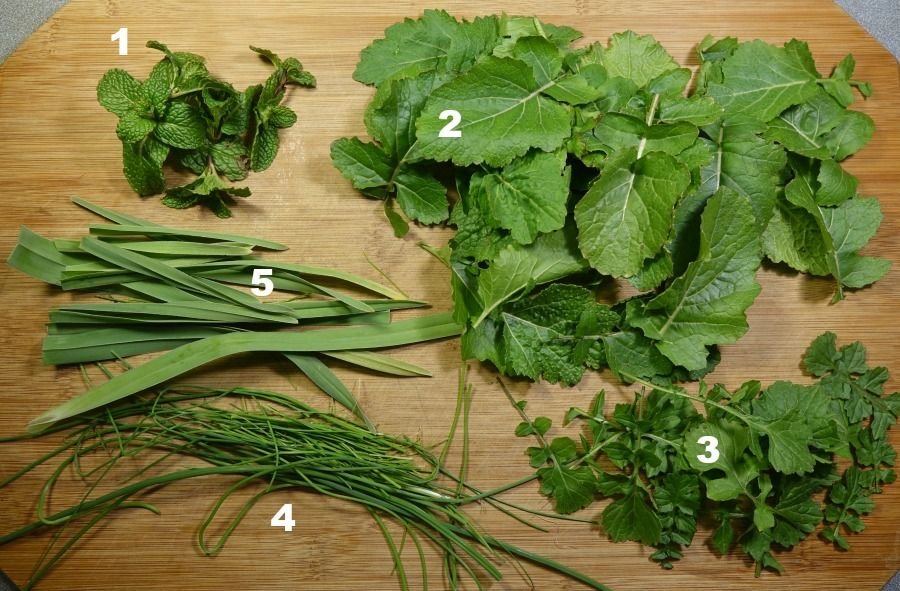
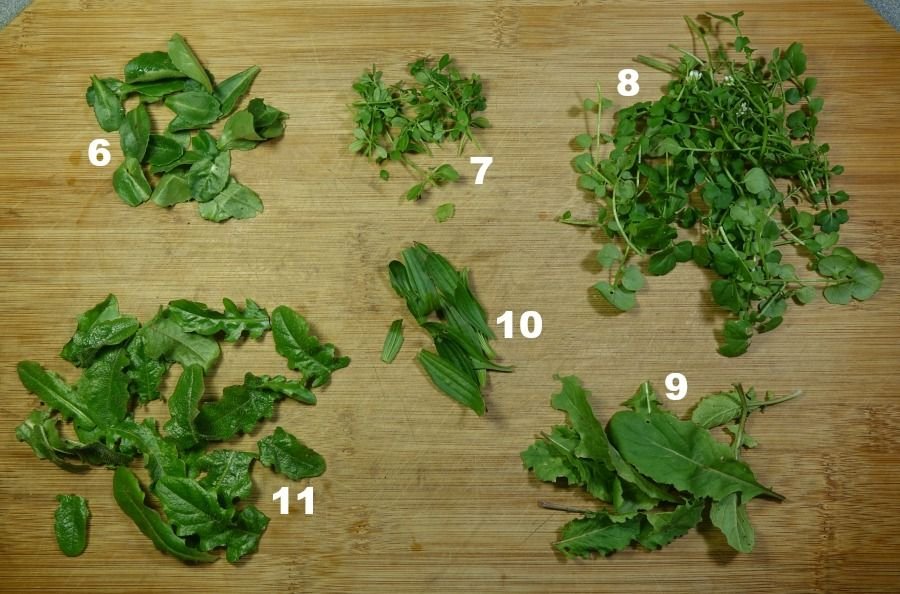
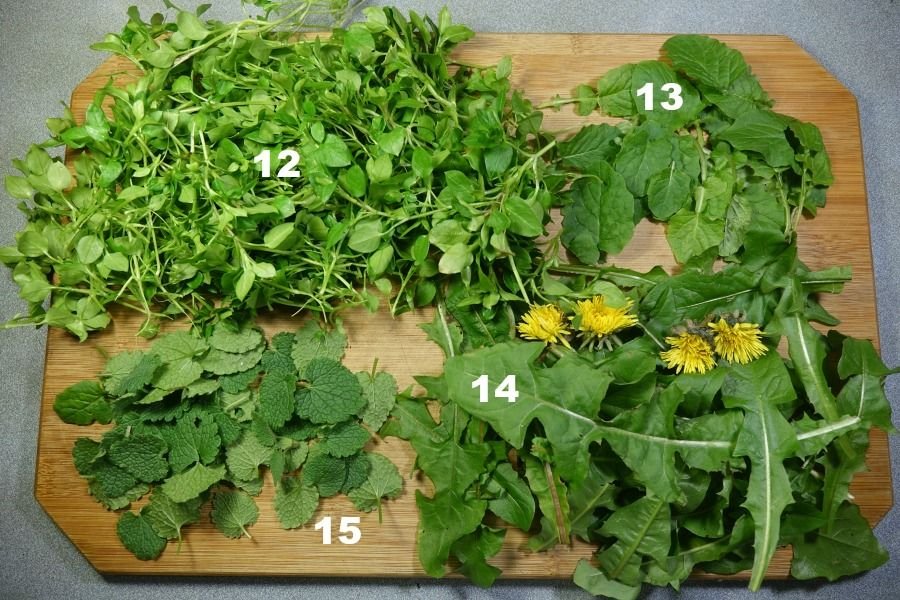
A Question - What Paleo Food Can I Put On My Salad?
Once I gathered all my greens, what would I put on top of them? I added homegrown walnuts for protein. And homemade raisins from my homegrown grapes. I thought these crops take so little care that they represent food that people across the ages have had access to. The Culinary Challenge rules said nuts and fruits were OK.
Because all these wild greens are so flavorful, I like to keep my salads simple, without a strong dressing. I like a simple oil and vinegar dressing, especially with Balsamic Vinegar. This fall, I also made a weed salad topped with Wild Shaggy Parasol Mushrooms soaked in a mix of olive oil, soy sauce, Worcestershire sauce, balsamic vinegar, and liquid smoke.
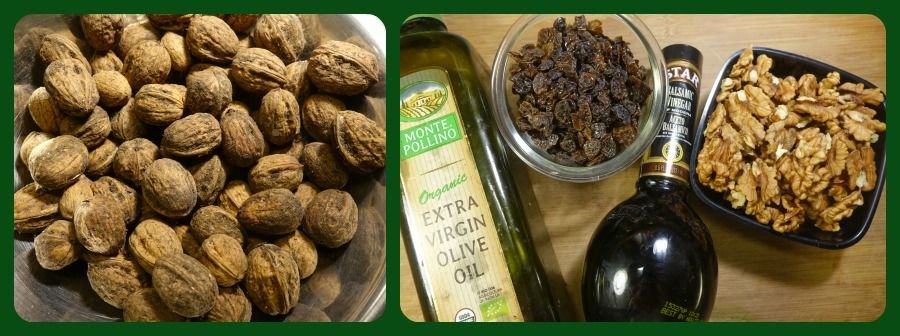
The Culinary Challenge rules said that olive oil qualified as a paleo food, but not any grains. So that rules out the soy sauce and Worcestershire sauce. And while paleo people surely cooked a lot of their food on open fires where smoke from wood fires flavored their food, nobody can pretend that liquid smoke, sometimes called Wood Vinegar, is a natural product. But what about the Balsamic Vinegar?
An Answer - Not All Balsamic Vinegar Is Paleo
The Culinary Challenge Rules did not address vinegar at all, as OK or not. So I consulted a few different paleo diet websites: Paleo Magazine, the Caveman Diet Blog, and the Paleo Porn Blog. All of them said that vinegars, as fermented products and not products of industrial processes, are fine for paleo diets.
So I made my salad -- and it was delicious! If you have not made your own wild weed salad, with a lot of different kinds of tasty weeds, I really encourage you to learn your edible weeds and enjoy this great food. These salads are great!
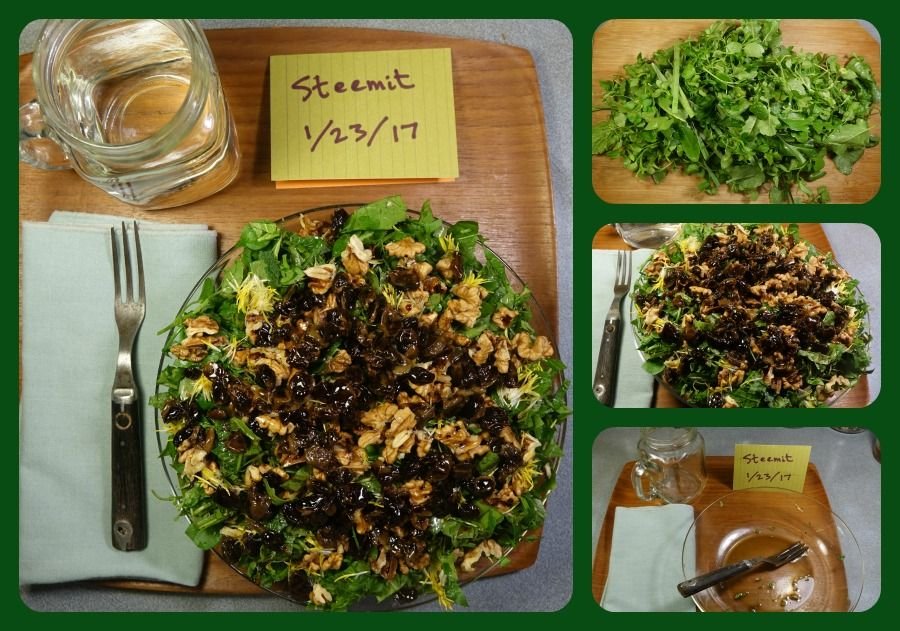
But there's a catch that I discovered. One of the key ideas of the Paleo Culinary Challenge was to not use food containing non-food additives, like chemical preservatives. I didn't look closely at the ingredients in my Balsamic Vinegar. I figured since it was "of Modeno", it must be "the good stuff". If I had looked closer, I would have seen that this particular Balsamic Vinegar contained caramel coloring and potassium metabisulfite. Neither of those is strictly paleo, because they are additives.
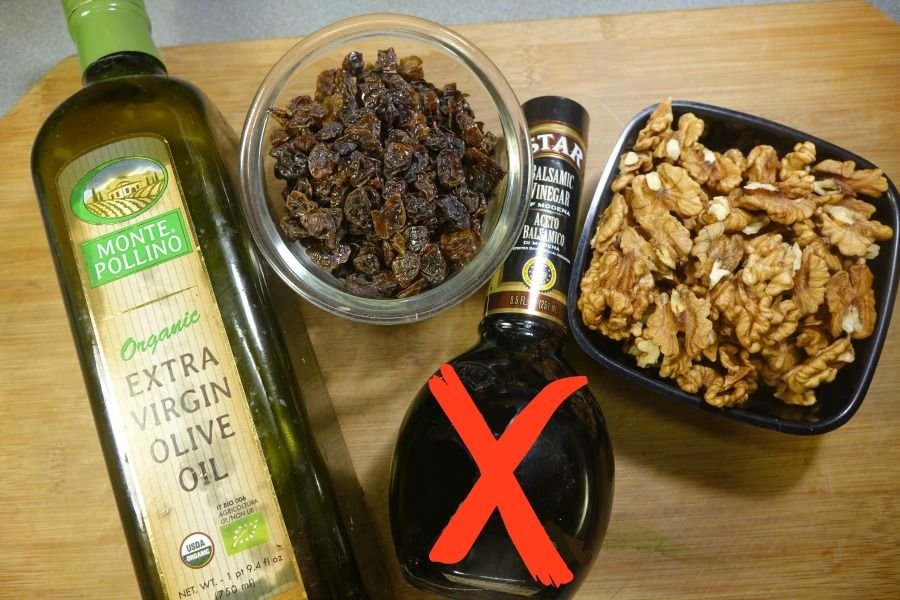
A Lesson - If A Food is Processed At All, Look At The Ingredients
I rely on my homestead for a lot of my food. I eat pretty simply. I don't use many processed foods. But I never thought so much about Balsamic Vinegar. Fortunately, I had an alternative that did qualify as Paleo for the Culinary Challenge.
Earlier in the year, I had make my own version of Balsamic Vinegar, from apple cider, honey, peppercorns, and the tender springtime needles of Spruce Trees. And that apple cider was simply fermented apples and water, with no preservatives at all. You can see how I made it, in this video that I made for my YouTube channel:
So the very next day, I picked more weeds and made another big salad with walnuts and raisins. And I used my Wild Spruce Tree Balsamic Vinegar for my entry into the Culinary Challenge.
So balsamic vinegar is not necessarily a simple food. From here on out, I will look more closely at the labels of any commercial balsamic vinegar that I buy. Or maybe I will just make more from my Spruce Trees this spring!
What Do You Think?
Have you ever tried "eat Paleo"? Do you eat any wild foods? Do you like Balsamic Vinegar on your salads? Do you knew what's in your Balsamic Vinegar?
If there are any specific plants from this salad, or others that I've posted about, that you want to know more about, let me know. I'll put together a post about it.
Plant List
- Spearmint - Mentha spicata - it lasts from spring until deep winter
- Field mustard greens – Brassica rapa – leaves from fall through early summer
- Hedge mustard – Sisymbrium officinale - leaves from fall through early summer
- Wild chives - Allium schoeneprasum - leaves from fall through spring
- Elephant garlic - Allium ampeloprasum - leaves from fall through spring
- English daisy – Bellis perennis – leaves from fall through early summer
- Cleavers - Galium aparine - leaves late winter to late spring
- Bittercress - Cardamine hirsuta - leaves fall to early summer
- Wild arugula - Diplotaxis tenuifolia - leaves all year, except for deepest cold
- Narrowleaf plantain - Plantago lanceolata - leaves fall through early spring
- Cats-ear - Hypochaeris radicata - winter leaves are tender and mild
- Chickweed - Stellaria media - from fall through spring
- Nipplewort - Lapsana communis - leaves fall through spring
- Dandelion greens and flowers – Taraxacum officinale – winter leaves are tender and mild
- Purple deadnettle - Lamium purpureum - leaves fall through early spring
Foraging on Steemit
I write about foraging because I believe that we can all have lives that are richer, more secure, more grounded, and more interesting by getting to know the plants and the land around us – in our yards, our parks, and our wilderness.
I would like Steemit to be the premier site for Foraging on the Internet! If you have any thoughts about foraging, or experiences to share, write a post and be sure to use the Foraging tag. And check out the @foraging-trail to see curated quality posts about foraging. Happy Foraging!
** Haphazard Homestead **
*** foraging, gardening, nature, simple living close to the land ***
All content is 100% Haphazard Homestead - photos and all!
I participate in Operation Translation. All my posts are available for translation under the rules listed on the linked post from @papa-pepper. Logo provided by @oepc85. Post goes 100% to Steem Power! Logo provided by @merej99

*** foraging, gardening, nature, simple living close to the land ***


